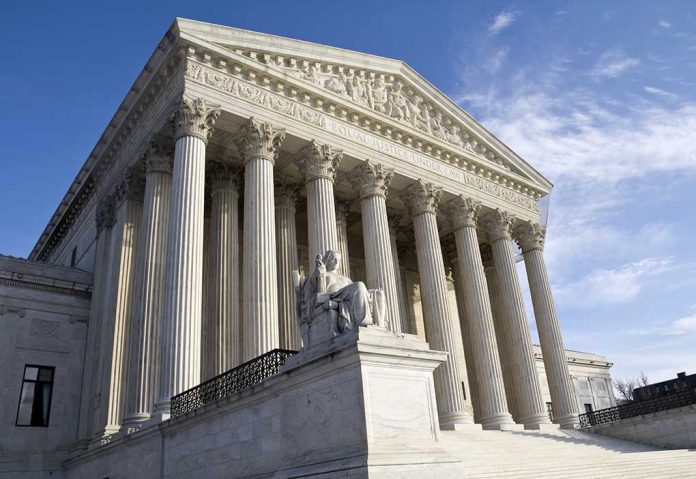
(UnitedVoice.com) – When President Donald Trump ordered a ban on bump stocks in 2018, he seemed to have achieved the impossible — he’d proposed a gun control move that both Liberals and the National Rifle Association (NRA) supported. However, multiple legal challenges were soon filed, and one of them has now reached the Supreme Court. Unusually, this case doesn’t hinge on the Second Amendment’s prohibition on infringing the right to keep and bear arms.
Massacre Prompted Ban
The October 1, 2017, mass shooting at a Las Vegas music festival shocked the nation. With 60 dead and 867 wounded, it was the worst mass shooting in modern US history. When it emerged that perpetrator Stephen Paddock had used rifles equipped with bump stocks to carry out his attack, there was significant pressure to ban the controversial accessories. In March 2018, then-President Donald Trump ordered the Justice Department to outlaw bump stocks, and in December of that year, the DOJ re-interpreted a 1934 law and ruled that the stocks are actually banned machineguns.
What Are Bump Stocks?
A bump stock is an aftermarket accessory that replaces a semi-automatic rifle’s standard stock and pistol grip. The key difference is that when the rifle is fired, its recoil pushes it back into the bump stock, at the same time as its action ejects the fired case and loads another cartridge into the chamber. Then, a spring inside the bump stock pushes the rifle forward again. Because the trigger is mounted on the rifle, it’s pushed forward against the shooter’s finger — and the rifle will keep firing until the shooter moves their finger out of the trigger’s way. It isn’t technically an automatic weapon, but it’s a crude simulation of one.
The Controversial ATF Definition
Between 2008 and 2018, the Bureau of Alcohol, Tobacco and Firearms (ATF) had ruled, several times, that a bump stock wasn’t a machine gun according to the 1934 National Firearms Act (NFA). However, after Trump’s call for a ban, the Justice Department and ATF re-interpreted the NFA and decided bump stocks are machineguns — and as they were all manufactured after 1986, the 1986 Firearm Owners Protection Act makes them illegal. Possessing one can now be punished with up to 10 years in jail.
Following the ban, at least eight legal challenges were filed. The Supreme Court refused to hear one of them in 2022, but now it’s agreed to hear Garland v Cargill. This suit was brought by Texas gun store owner Michael Cargill, who is arguing that the ATF didn’t have the authority to re-interpret the NFA.
Justice Brett Kavanaugh has already pointed out that the case doesn’t actually cite the Second Amendment as part of its challenge to the ban. It really comes down to a very technical debate about what “a single function of the trigger” means — and Cargill says that’s for Congress to decide, not the ATF. On February 28, the Supreme Court heard oral arguments on his case, and will probably issue its ruling in June.
Copyright 2024, UnitedVoice.com






















